 |
 |
 |
| |
Remdesivir Linked to Viral Clearance Only in Certain Subsets
|
| |
| |
IDWeek, September 29-October 3, 2021
Mark Mascolini
Remdesivir does not improve chances of clearing SARS-CoV-2 in inpatients with pneumonia, according to results of a 648-person matched-cohort analysis at San Raffaele University in Milan, Italy [1]. But viral clearance did prove faster with remdesivir in two groups: younger people and those with an admission P/F ratio below 200.
US and European regulators licensed remdesivir for treating COVID-19 inpatients, including children at least 12 years old and weighing at least 40 kg. Since data on viral clearance with remdesivir remains scarce, San Raffaele researchers conducted this matched-cohort study of adults admitted to the hospital with pneumonia and a positive SARS-CoV-2 test between February 25, 2020 and April 15, 2021.
The researchers matched each remdesivir-treated case to 2 remdesivir-untreated controls by age (+/- 5 years), sex, and P/F ratio [2] at admission (+/- 10). A P/F ratio above 400 is normal [2]. Follow-up started with hospital admission and ended on the day of the first SARS-CoV-2-negative nasopharyngeal swab within 30 days of discharge.
The analysis involved 216 cases and 432 controls. Cases and controls were similar in age (median 64 years), sex (39.8% female), P/F ratio (46.6% above 200, 53.4% below 200), and body mass index (overall median 26.9 kg/m2). Remdesivir-treated case patients included a lower proportion of whites (80.6% vs 87.5%, P = 0.025) and had shorter symptom duration (median 7 vs 8 days, P = 0.009).
Among all 648 participants, 490 (75.6%) had viral clearance in a median of 25 days. Time to viral clearance was similar in remdesivir-treated patients and no-remdesivir controls (P = 0.519). But time to viral clearance was significantly shorter with remdesivir in (1) people 63 years old or younger (P = 0.0037) and (2) people with a P/F ratio below versus above 200 (P = 0.0066).
Multivariable Cox proportional hazards analysis determined that use of remdesivir or use of a steroid was not independently associated with viral clearance. Neither was female sex, presence of comorbidities, or baseline total lymphocyte count, C-reactive protein, or lactate dehydrogenase. But an admission P/F ratio above 200 independently raised chances of viral clearance about 25% (adjusted hazard ratio [aHR] 1.275, 95% confidence interval [CI] 1.029 to 1.579, P = 0.026), while every additional 10 years of age independently cut chances of viral clearance (aHR 0.990, 95% CI 0.983 to 0.998, P = 0.009).
Among the 490 people who cleared virus, getting remdesivir had no significant impact on time to viral clearance (P = 0.075). But remdesivir was linked to a greater chance of viral clearance in people with an admission P/F ratio at or below 200 (P = 0.035), in the 55-to-65-year age group (P = 0.025), and in people with comorbidities (P = 0.028).
References
1. Spagnuolo V, Voarino M, Tonelli M, et al. Impact of remdesivir on SARS-CoV-2 clearance in a real-life setting: a matched cohort study. IDWeek, September 29-October 3, 2021. Abstract 505.
2. The P/F ratio (pO2/FIO2) identifies acute hypoxemic respiratory failure. A P/F ratio at or above 400 is normal. Pinson & Tang. Everything you need to know about P/F ratio and how to calculate PaO2/FIO2. August 11, 2019. https://www.pinsonandtang.com/pf-ratio/
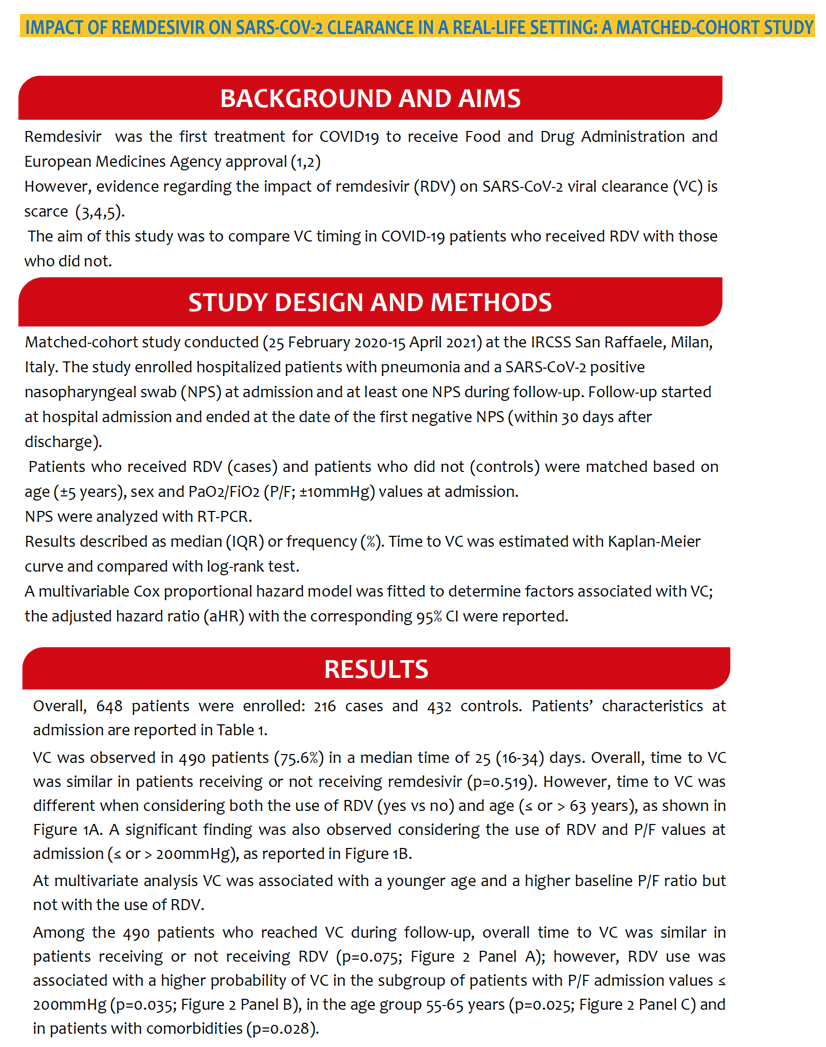

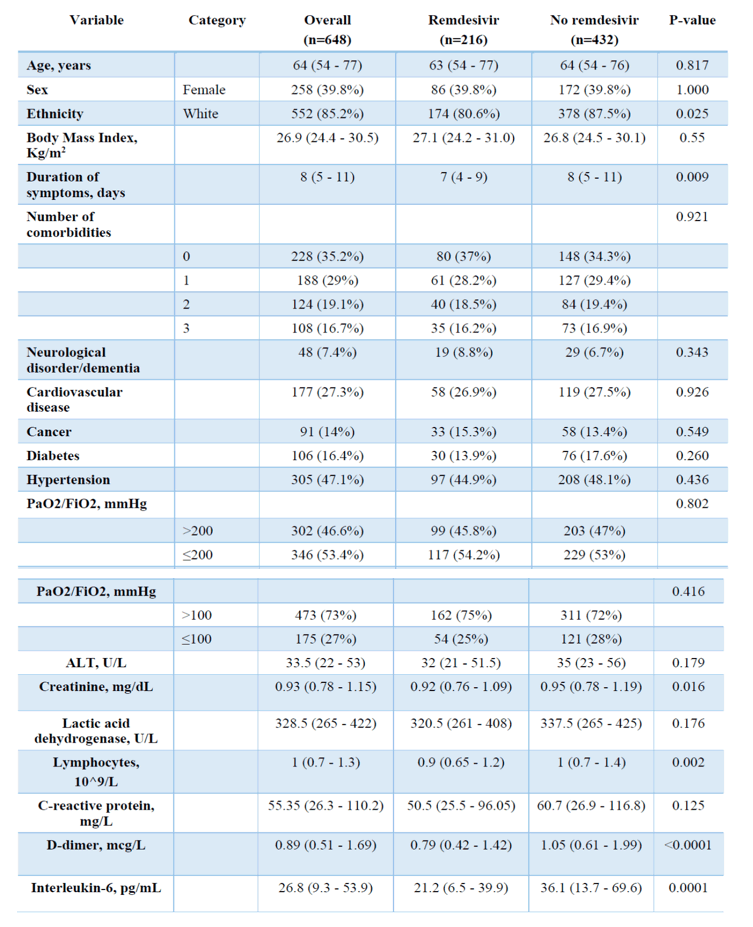
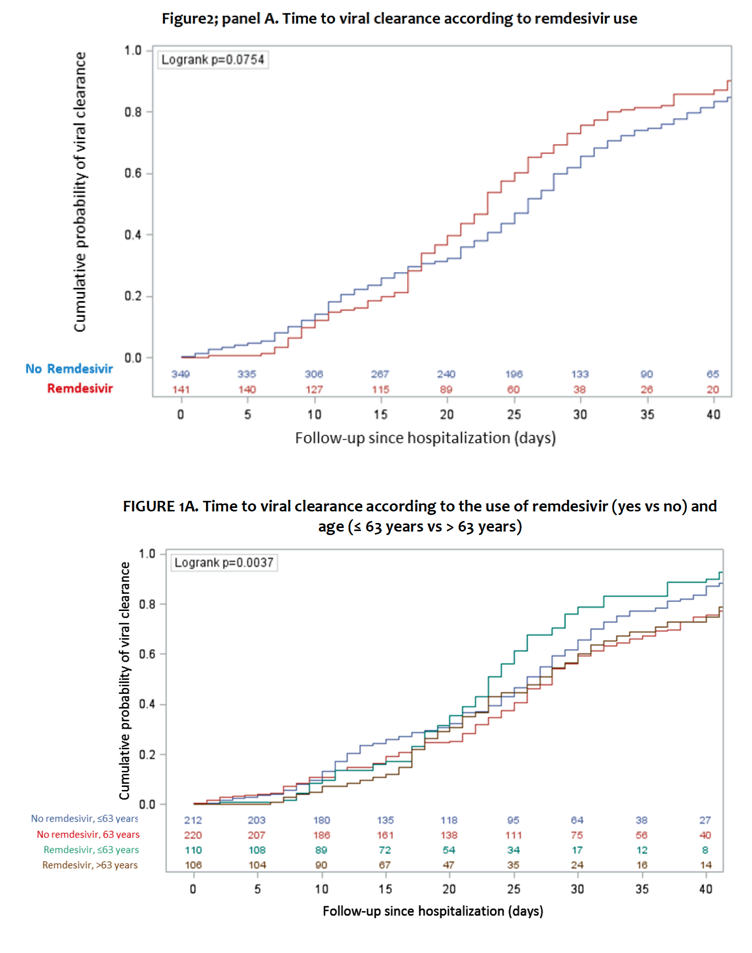
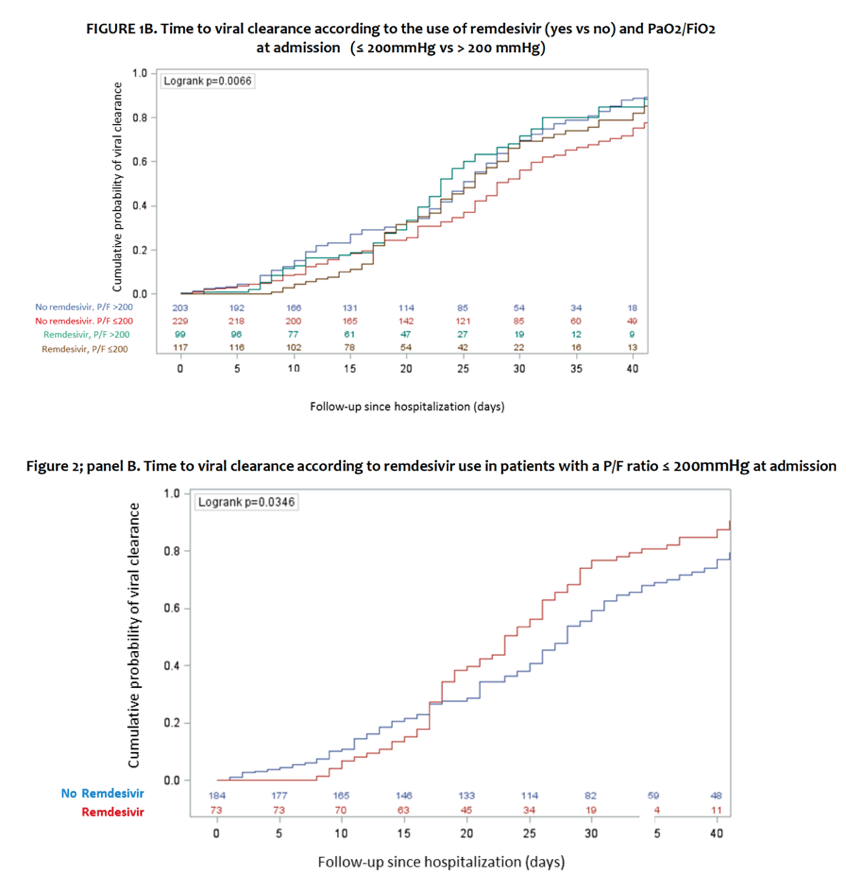
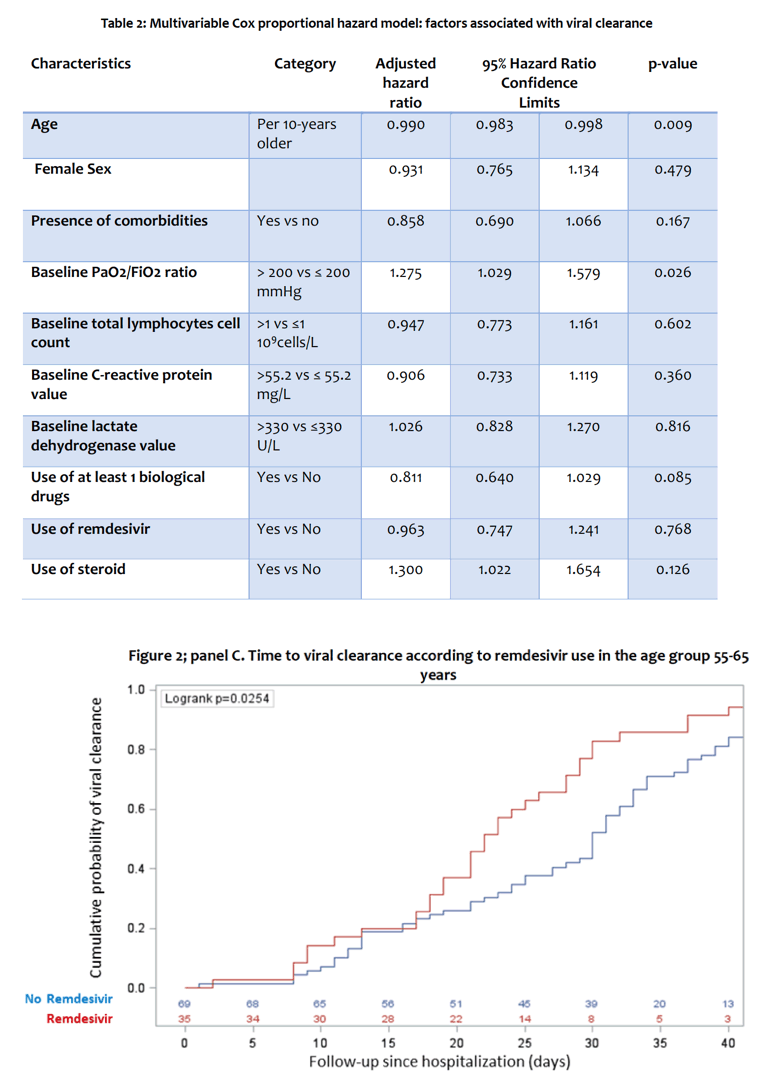

|
| |
|
 |
 |
|
|